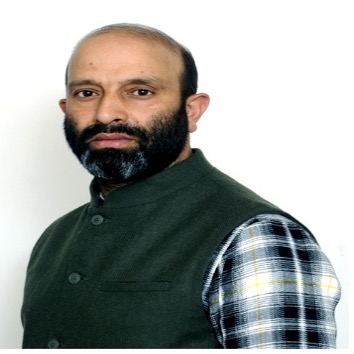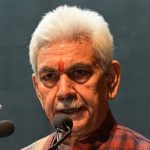One single terror incident in Pahalgam cannot overshadow the decades of change in Kashmir. Jammu and Kashmir has long been synonymous more with headlines of violence than with narratives of peace or progress. The region’s immense strategic, cultural, and geographical significance stood in stark contrast to its underdeveloped infrastructure, stagnant education system, inadequate healthcare, and limited employment opportunities.
Against this backdrop, the abrogation of Article 370 in August 2019 stands as a historical inflection point. This constitutional change dismantled the region’s long-standing legal and political exceptionalism and marked the beginning of a new administrative and developmental framework.
The central government’s aim was to ensure uniform policy implementation, deepen integration with the rest of India, and fast-track long-overdue reforms. This move was a watershed moment in Kashmir’s post-independence history and has since been followed by unprecedented shifts in both governance and ground-level transformation.
Over the last decade, especially after 2014 and more intensely post-2019—Kashmir has witnessed a remarkable journey of reconstruction and reform. The region has begun shedding its image of perennial conflict and is being redefined through the lens of developmental progress, security stabilization, and social reintegration.
Tangible change is now visible not only in official reports or speeches but in the lives of ordinary people—be it improved access to healthcare, expansion of educational institutions, growing infrastructure networks, or the revival of tourism.
This articleis critically analyses the scope, scale, and sustainability of these changes across seven core sectors: infrastructure development, education reform, healthcare improvements, women’s empowerment, tourism revival, employment and skill development, and peace and security. Drawing on verified data, policy documents, and direct accounts of beneficiaries, the article traces how each sector has evolved over the past ten years. It examines both achievements and the gaps that remain, offering a holistic view of the region’s transformation.
Importantly, it does not seek to paint an idealistic portrait of Kashmir. Challenges persist, regional disparities, the remnants of terrorism, and socio-political complexities continue to shape the daily realities of its people. However, the undeniable shift from prolonged stagnation to forward momentum deserves documentation. The narrative here is not of utopia, but of progress, slow, uneven, but measurable.
Within this broader analysis, the status of women holds particular significance. From their historical roles as community leaders, educators, and spiritual guides to their modern struggles during periods of violence, Kashmiri women have been symbols of resilience and perseverance. Their journey through the phases of political instability and recent empowerment initiatives serves as a powerful barometer of Kashmir’s socio-political evolution. As such, women’s empowerment will serve as a focal theme within this decade-long story of change.
Beti Bachao, Beti Padhao: A Revolutionary Slogan
The Beti Bachao,Beti Padhao (BBBP) initiative, launched to address the declining child sex ratio and gender-based discrimination, has been a transformative program in Jammu & Kashmir. The initiative focused on awareness generation, enforcement of laws, and enabling the education and empowerment of the girl child. Backed by structured financial instruments like the Sukanya Samriddhi Yojana (SSY) and Laadli Beti Scheme, this movement evolved from a slogan into a strategic policy implementation.
Over 1 lakh girls in Kashmir opened SSY accounts, with ₹380 crore collectively deposited, offering secure long-term savings linked to education and marriage. The Laadli Beti Scheme targeted economically weaker sections, providing financial assistance to families upon the birth and maturity of a girl child. By FY 2023–24, a staggering 1,61,552 girls had benefited from this scheme, with ₹847 crore disbursed. T
his dual-pronged strategy not only incentivized the birth and care of girl children but also strengthened the message that daughters are equally valuable contributors to society. Government and community-level programs conducted gender sensitization drives, encouraging equal treatment of boys and girls in education, nutrition, and opportunity. In sum, BBBP laid the groundwork for a generational shift in attitudes towards the girl child, forming a cornerstone of broader gender equity in Jammu & Kashmir
Employment and Skill Development in Jammu & Kashmir (2014–2024)
Employment and skill development in Jammu & Kashmir have seen considerable transformation over the last decade through targeted interventions by the central and UT governments. Historically plagued by high unemployment—particularly among the educated youth, the region saw focused efforts post-2014 to link skill development with job creation. A major leap came from the Prime Minister’s Employment Generation Programme (PMEGP), which provided credit-linked subsidies to thousands of micro-enterprises.
The Mumkin Scheme emerged as a unique self-employment initiative under which youth were supported in purchasing commercial vehicles, promoting financial independence and reducing dependency on government jobs. Likewise, the Tejaswini Scheme, with a specific focus on women aged 18–35 years, empowered them to launch businesses through financial aid and mentorship. Mission Youth served as an umbrella framework to consolidate job fairs, vocational training, and financial assistance schemes.
Data shows the unemployment rate dropped from 6.7% to 6.1% during this period, while the Labour Force Participation Rate rose to 64.3%, indicating a more engaged workforce. Through ITIs, PMKVY, DDU-GKY, and regular job fairs, thousands of youth were trained in trades like hospitality, healthcare, and retail. Such convergence of policy, finance, and mentorship reshaped the employment ecosystem, especially in rural belts. As Jammu & Kashmir transitions into a service-led and self-reliant economy, these skill-driven employment programs provide a sustainable pathway forward.
Tourism Revival and Cultural Reconnection in Jammu & Kashmir (2014–2024)
Tourism in Jammu & Kashmir, once paralyzed by terrorism, has rebounded significantly between 2014 and 2024. The region experienced a strategic revival through infrastructure improvements, branding campaigns, and safety assurances that repositioned it as a global tourist destination. Key interventions included the development of heritage circuits, upgrades to iconic religious sites like Amarnath and Vaishno Devi, and the restoration of Mughal gardens and Buddhist relics.
The G20 Tourism Working Group meeting hosted in Srinagar in May 2023 was a major diplomatic milestone, sending a strong global message about restored normalcy. From just 7 lakh tourists in 2021, arrivals surged to nearly 35 lakh in 2024, an over fivefold increase. Of these, 43,654 were international tourists, indicating renewed global confidence. The Tulip Garden in Srinagar alone attracted 8.5 lakh visitors in 2024, showcasing the Valley’s seasonal and aesthetic appeal. Economically, the tourism sector contributed ₹18,550 croreabout 7% of Jammu & Kashmir’s GSDPcreating a ripple effect for local businesses, artisans, and youth.
Cultural and sporting events such as the Winter Carnival and Khelo India have further elevated the region’s profile, fostering cultural pride and economic activity. Tourism has not only become a key economic driver but also a channel for peacebuilding, generating livelihood for women-led homestays, guides, and transport operators. In this period of renaissance, tourism stands as both a symbol and substance of Jammu & Kashmir’s journey towards stability and prosperity.
Healthcare Improvements in Jammu & Kashmir (2014–2024)
The healthcare sector in Jammu and Kashmir has seen substantial restructuring over the past decade, transforming from a system marked by urban-rural disparity and infrastructure deficits into a more inclusive and service-oriented model. Historically, healthcare access in Kashmir was limited by geographical constraints, administrative neglect, and prolonged instability. However, since 2014—and especially post-2019—the government has made targeted investments in health infrastructure, insurance coverage, maternal and child care, and digital health integration.
One of the landmark initiatives in this period was the implementation of Ayushman Bharat – Pradhan Mantri Jan Arogya Yojana (PM-JAY). This scheme, which offers free secondary and tertiary care to economically vulnerable families, has been widely expanded in Jammu and Kashmir under a special provision titled SEHAT (Social Endeavour for Health and Telemedicine). As shown in the chart above, the number of beneficiaries under Ayushman Bharat rose from just 50,000 in 2014 to a remarkable 700,000 by 2024. This indicates both growing enrollment and actual utilization of healthcare services by previously excluded populations.
Simultaneously, the region saw a visible expansion in its physical health infrastructure. Over 70 new health centers—including Primary Health Centres (PHCs), Community Health Centres (CHCs), and sub-district hospitalswere constructed or upgraded during this period, as shown in the chart.
Remote districts such as Kupwara, Kishtwar, and Doda benefitted from improved connectivity and better-equipped facilities. The establishment of new AIIMS campuses in Awantipora and Vijaypur further reflects the government’s intent to provide specialized care within the UT itself, reducing dependence on metropolitan hospitals in Delhi, Chandigarh, or Amritsar.
Other health interventions included the rollout of Mission Indradhanush for full immunization, Janani Suraksha Yojana for safer childbirth, and e-Sanjeevani telemedicine services to connect rural populations with urban specialists. Challenges remain, particularly in remote tribal belts and hilly areas where seasonal access and staff shortages affect service delivery. Mental healthcare remains another under-addressed dimension, given the prolonged psychological trauma inflicted by conflict and displacement.
Peace and Security Enhancements in Jammu & Kashmir (2014–2024)
Over the past decade, Jammu and Kashmir has undergone a decisive transformation in its security landscape. Once synonymous with terrorism and shutdowns, the region has seen a dramatic drop in violence, restoration of public confidence, and a resurgence of civic life. Key reforms in governance, law enforcement, and infrastructure have laid the foundation for durable peace.
Decline in Terror-Related Incidents
Between 2014 and 2024, terror incidents dropped by 69% and civilian killings reduced by more than 80%. Stone pelting, once a near-daily occurrence, has virtually vanished. Shutdowns, curfews, and strikes have declined to historic lows, enabling schools, businesses, and transportation to operate uninterrupted.
Civilian confidence has significantly improved. Markets, schools, and public transport operate regularly. The peaceful hosting of the G20 Working Group in Srinagar signalled global recognition of Kashmir’s restored normalcy. Diplomatic and media observers cited the event as evidence of lasting peace.
Over the past decade, Kashmir has witnessed a remarkable transformation across its socio-economic and political landscape. Once overshadowed by narratives of terrorism, uncertainty, and stagnation, the region is now gradually being redefined through stories of peace, progress, and participatory governance.
Looking ahead, sustained development in Kashmir will depend on inclusive governance, youth participation, and continued peace. Addressing challenges like regional disparities, climate vulnerability, and skill mismatches will be key.
Kashmir’s decade of change has laid the foundation; the way forward lies in consolidating these gains through trust-building, innovation, and equitable growth for all its people.
(Author is a columnist and can be reached at: [email protected])










